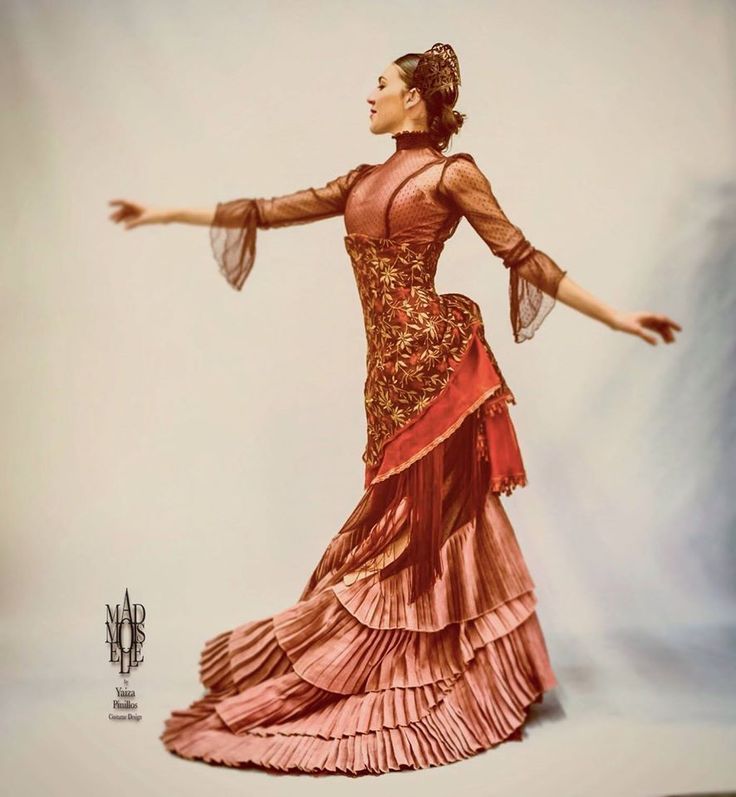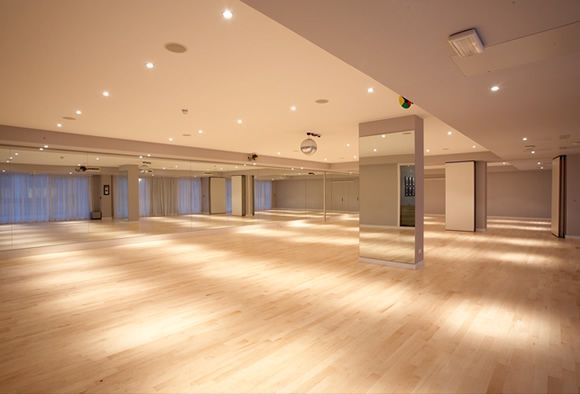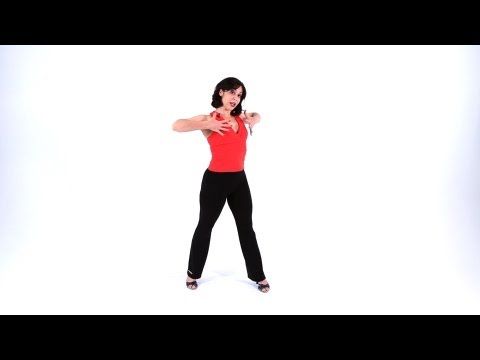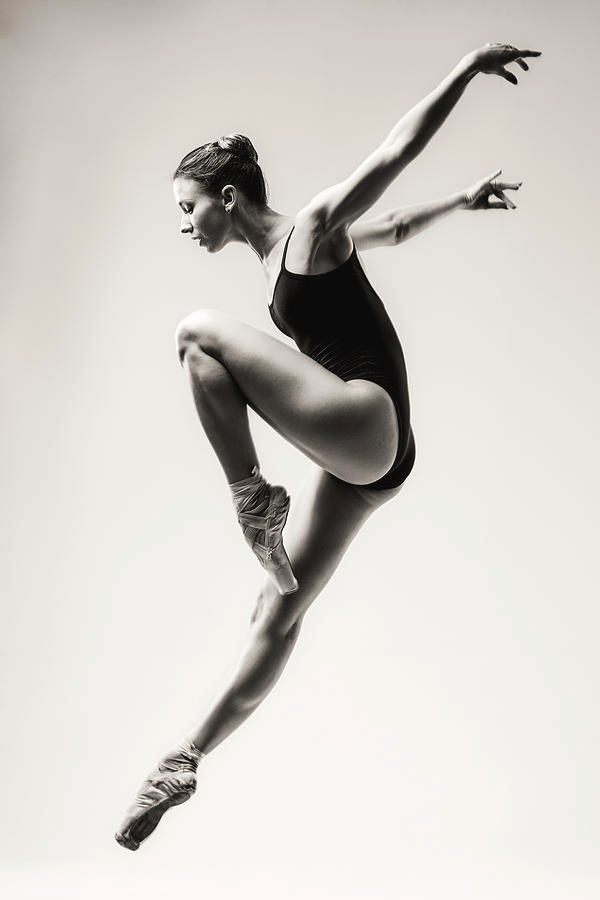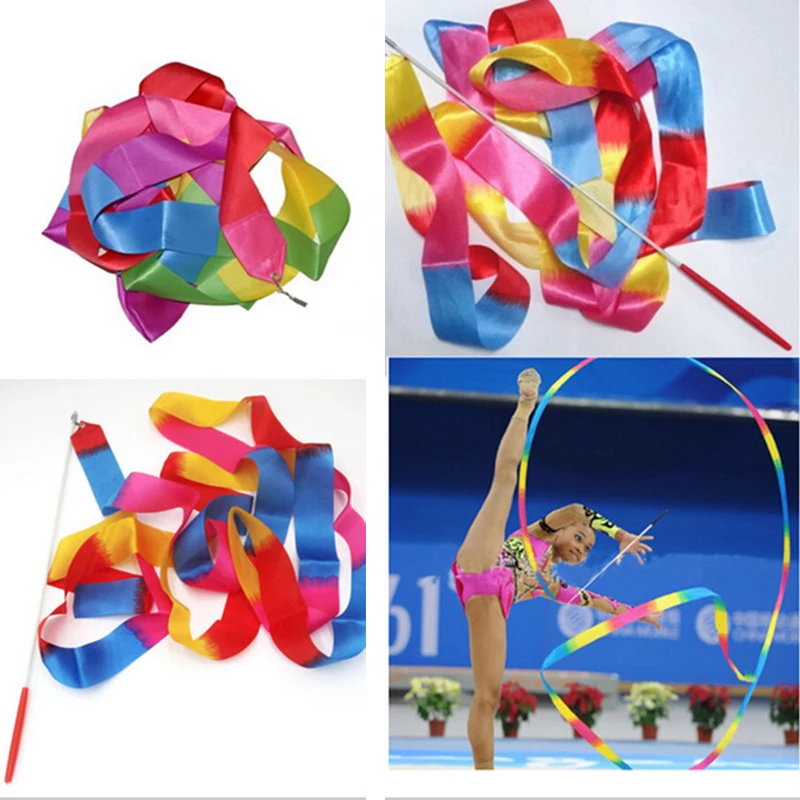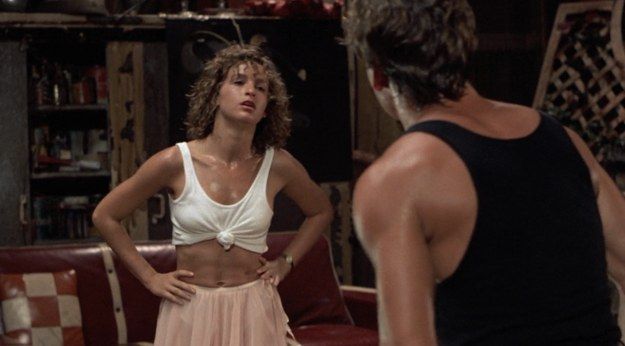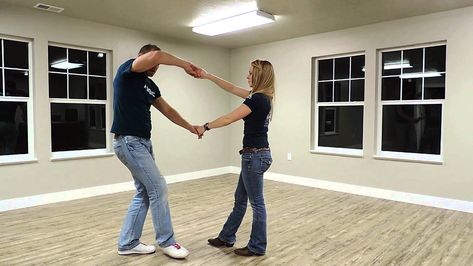How to dance guajira
Flamenco palos - Guajira - La Candela
education · 26. January 2021
In this blog post, I will analyze the palo flamenco called guajira. This palo belongs to the group called Cantes de Ida y Vuelta (Roundtrip Songs) because they have ties to American genres that were adapted to flamenco. During colonial times, Seville and Havana were very close because of the established commercial route between the two. Ships from Spain left loaded with highly desired European goods and returned with silver from Mexico, pearls from Venezuela, plus porcelain and silk from China. With the goods exchange came the cultural and art exchange, which in flamenco, resulted in the Cantes de Ida y Vuelta. Guajira was born out of the influence of Cuban music in flamenco. It is very likely that a Spanish song travelled on that ship to Havana and came back influenced with Cuban genre caled punto cubano (punto guajiro). Guajira's origin is also reflected in its letras, which often talk about Cuba, its capital Havana, beautiful women, cigars, and exotic fruit of Cuba.
Although freedom exists in the way guajiras are structured, it's always best to know the basic structure and analyze one of the structures that are pre-recorded for dance.
Guitar intro (falseta)
Salida del cante (ayys)
Desplante and llamada
First letra (part 1)
First letra (part 2)
Desplante/ falseta de pies
Subida
Ciere
Second letra (part 1 & 2)
Falseta
Escobilla
Subida
Change to bulerias
Macho de guajiras (final)
The guajira I analyze starts with a guitar intro which is compás-free that can be danced to or not. Eventually guitar turns into compás and the signer starts to sing (salida del cante).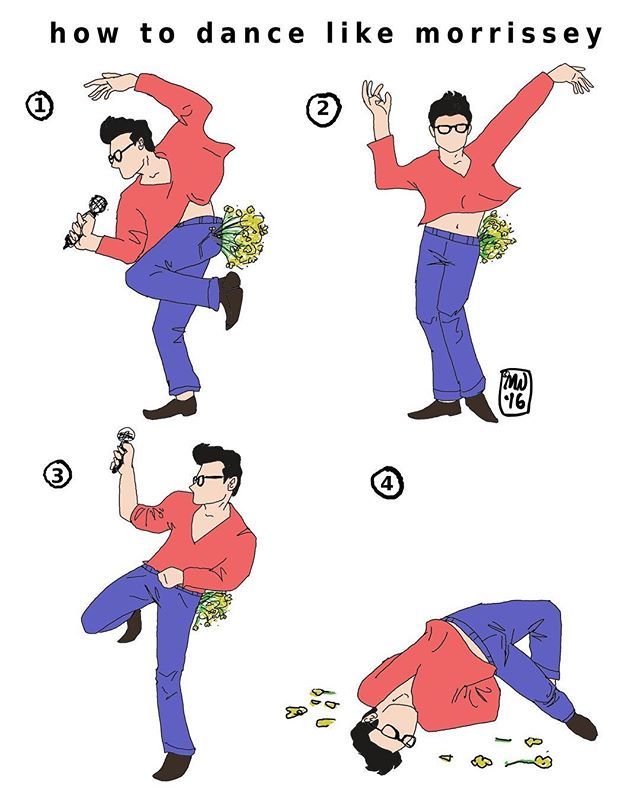 Salida del cante is followed by a footwork sequence leading into a llamada for the first letra. The compás closes and restarts slowly. The raising of the tempo and slowing down is very typical for guajiras and is done before each letra.
Salida del cante is followed by a footwork sequence leading into a llamada for the first letra. The compás closes and restarts slowly. The raising of the tempo and slowing down is very typical for guajiras and is done before each letra.
The first letra consists of two parts. The first part, talking about an intention to marry a beautiful Cuban woman, goes:
Contigo me caso indiana
(respiro)
si se entera tu papa
y se lo dice a tu mama
hermosísima cubana
It's very typical for the singer to leave a one-compás space after the first verse called respiro. This compás is typically danced with footwork or body remate. We always need to pay attention to that moment to dance that remate or not. There is also an option of forgoing this remate and simply marking the compás. In this instance, we still need to be aware where we are in the letra. The same appears to the space between the first and second part of the letra. The second part of the first letra talks about a beautiful house a man prepared for his wife to-be in Havana:
In this instance, we still need to be aware where we are in the letra. The same appears to the space between the first and second part of the letra. The second part of the first letra talks about a beautiful house a man prepared for his wife to-be in Havana:
Tengo una casa en la Habana
reservada para tí
(respiro)
ay! con el techo de marfil
y el piso de plataforma
para tí blanca paloma
llevo yo la flor de lis
The first letra is followed by a falseta, which in this case is a falseta de pies. Falseta de pies is what some dancers refer to as a falseta that is meant to accompany footwork. A guitar in these falsetas always clearly marks the compás and a dancer either asks a guitarist to play one to inspire her footwork or a guitarist throws it during footwork thinking it would match the dancers feet.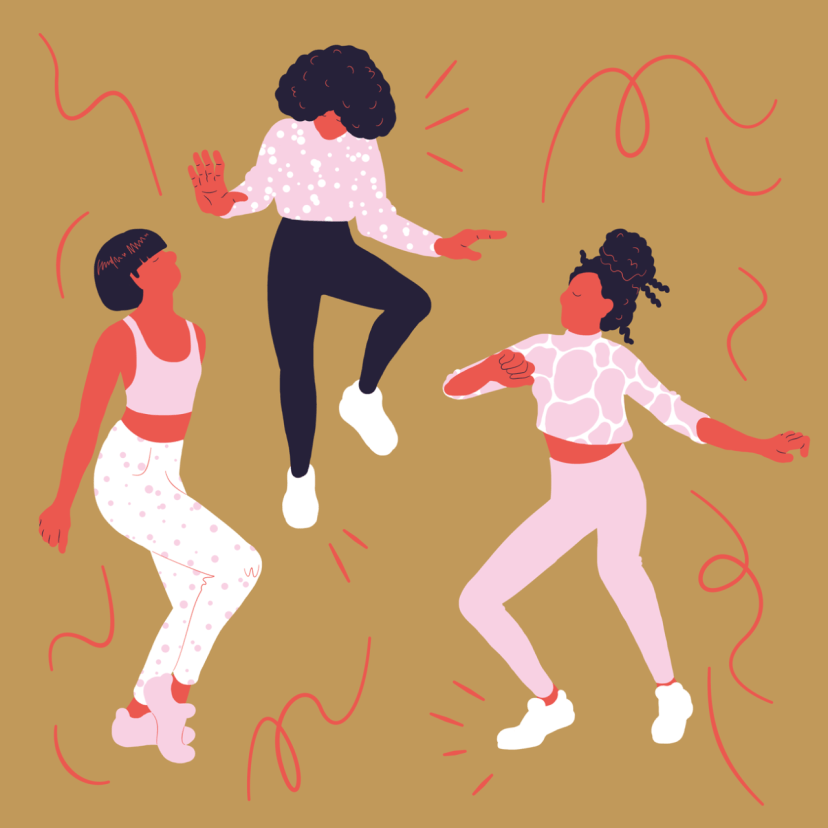 Be careful, with the term falseta de pies and be prepared for an explanation because some guitarists don't know that term. The footwork part between the letras is a perfect example of what a falseta de pies could sound like in guajiras. The falseta is resolved and followed by a subida and cierre which also serves as a llamada for the second letra.
Be careful, with the term falseta de pies and be prepared for an explanation because some guitarists don't know that term. The footwork part between the letras is a perfect example of what a falseta de pies could sound like in guajiras. The falseta is resolved and followed by a subida and cierre which also serves as a llamada for the second letra.
The second letra talks about the daily life in Havana:
Part 1
Me gusta por la mañana
(respiro)
después del café bebio
pasearme por la Habana
con mi cigarro encendío.
Part 2 (without a break)
Y sentarme muy tranquilo
en mi silla o mi sillón
(respiro)
y comprarme un papelón
de esos que llaman diario
y parezco un millonario
rico de la población.
The second letra is followed by a falseta that is very soft and best to be danced with marcajes. When the guitarist resolves the falseta , the dancer starts an escobilla. There is no traditional escobilla melody such as found in alegrías and again, a guitarist can throw in a falseta if he thinks it matches the footwork pattern, or a dancer can ask for a falseta de pie (if we are not in a tablao settings). In this recording we clearly hear a falseta de pies.
Following the escobillas, the dancer starts a subida and calls for the macho de guajiras, which is a special letra sung in bulerias compás while preserving the modality of guajiras. The macho talks about a Cuban girl loved by a sailor sailing between Cadiz and Havana:
De mi trigueña, mi cubana
Desde Cádiz hasta la Habana
El amor del marinero
De la brisa que lleva el agua
Cada beso que nos dimos
Desde Cádiz hasta la Habana
A signer usually extends the macho with repeats and ayys until the dancer finishes dancing, signalizes that it is time for a cierre, leaves the stage, or positions herself by the musicians to finish.
To hear the escobillas, falsetas de pies, llamadas and remates, listen to the second version called Guajiras completo con baile flamenco.
When it comes to dance example for educational purposes, it is always best to look at older videos that usually follow a traditional structure. As you can see, guajiras are usually danced with an abanico:
Here are a few more versions of a guajira recorded for dancing with a bit different structures that the one discussed above. As you can hear, the words to each letra can vary but the melodies stay similar. When it comes to learning a palo and its letras the most important is to learn their melodies.
If you are considering learning how to dance guajiras, take a look at the flamenco classes I offer!
tagPlaceholderTags:
guajira | Salsaddiction
Cha Cha vs Son Montuno – Part 2
Posted on by Clavecito
| Song (iTunes) | Artist | Category | Origin |
| Mas Bajo – El Rey | Tito Puente | Cha-Cha | USA |
| Lindo Yambu – Leyendas De La Fania Vol III | Eddie Palmiere | Son-Montuno | USA |
| American Sueño | La Excelencia | Guajira* | USA |
| Regalito de Dios – La Vuelta al Mundo | Havana d’Primera | Timba | Cuba |
| Tu Loco Loco y Yo Tranquilo – La Herencia | Roberto Roena | Salsa | Puerto Rico |
| Las Nenas Lindas (Version Salsa) | Jowell y Randy | Salsaton | Puerto Rico |
| Quiero Estar Contigo – Single – Ivan Venot | Ivan Venot | Bachata | Italy |
| Me Enamore – Lo Mejor de Lo Mejor | Kiko Rodriguez | Bachata | Dominican Rep.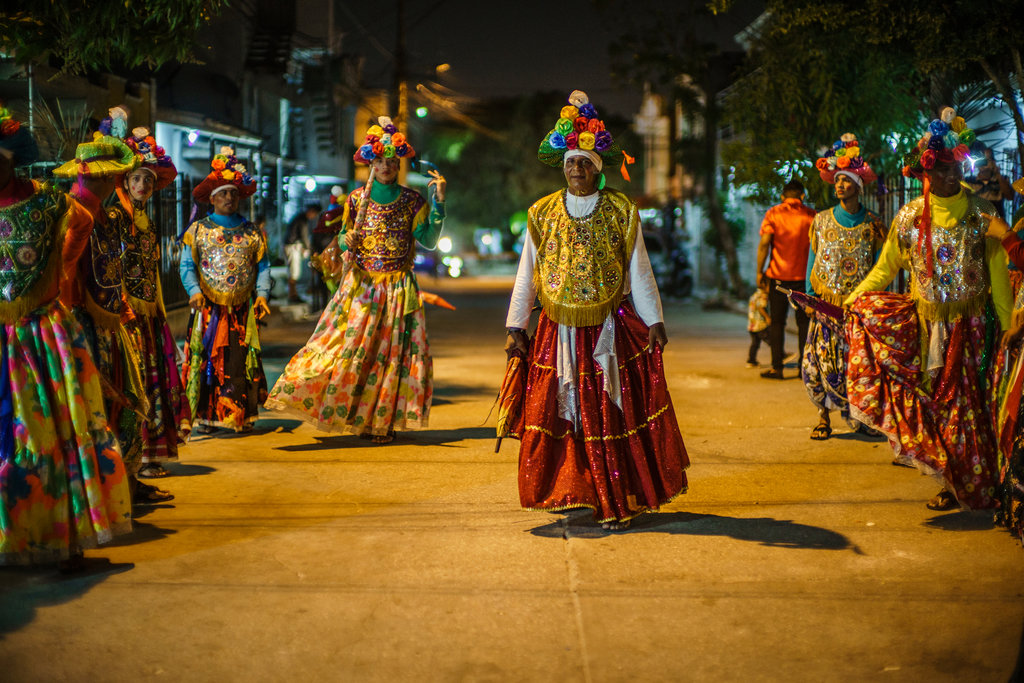 |
| Ma meilleure amie – Ma meilleure amie – Single | Kaysha | Zouk | Zaire |
*Depends who you ask (see link)
Recognizing Cha Cha and Son Montuno
In my last blog post I introduced the idea that some of the music that people like to dance cha-cha to is, musically speaking, not actually cha-cha. In that post I highlighted the origins of cha-cha music and that of another genre commonly used for dancing cha-cha, son montuno. In this post I am going to dig a little deeper into the musical differences between these two genres. Now, I am not a musician so I’ve focused on musical traits that I think are relatively easy to understand and that the casual listener can identify.
Cha-Cha
I’ve included in this month’s play list a cha-cha by Tito Puente called Más Bajo. A great track for dancing cha-cha and a great track for highlighting the musical characteristics I’m going to describe below.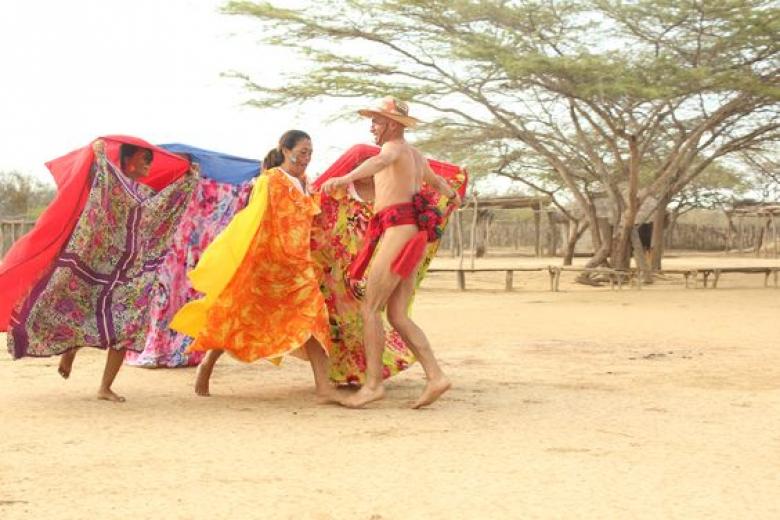 If you really want to hear these traits in the music, I highly recommend getting a copy of the song and listening to it a few times with a pair of good headphones. Ok that said, let’s get to the details.
If you really want to hear these traits in the music, I highly recommend getting a copy of the song and listening to it a few times with a pair of good headphones. Ok that said, let’s get to the details.
-
Cha-cha music does not typically make use of the clave rhythm.
-
Traditionally, cha-chas are always played in a major key (Más Bajo for example is in the key of C)
-
Cha-cha music features the standard conga tumbao pattern, which typically uses open strokes on beats “4 &”. This is also common in other Latin genres. However, in cha-cha music these beats would often be emphasized by additional instruments such as the piano, bass and possibly horns.
-
The basic pulse of cha-cha is double that of a Son Montuno. This rhythm is emphasized by a bell (campana) on the 8th notes (dancer’s count) and is potentially played by the timbalero (timables player)
-
In addition to the basic pulse mentioned above, another common rhythm found in cha-cha is the following one, which usually starts on the first beat of the bar.

-
(1)daaaa – di daaaa – di di (1) daaaa – di daaaa – di di etc.
-
-
In cha-cha the piano often plays repeated short, simple passages of music (also known as vamps).
There you have it, 6 basic characteristics that you can listen for in a song to see if it’s cha-cha. Again, take a listen to the song I mentioned earlier, Más Bajo by Tito Puento, to see if you can identify any of those traits in the music.
Son Montuno
Let’s move on to son montuno. For this discussion, as our point of reference we’re going to be listening to a song by Eddie Palmieri called Lindo Yambu. Here are some of the characteristics that you are going to listen for.
-
Unlike cha-cha, son montuno makes use of the clave rhythm (either implicitly or explicitly).
-
The basic pulse of a son montuno is emphasized by a bell (campana) which tends to play beats 1, 3, 5, 7
-
You may hear the piano or bass or conga accenting the “4 &” beat, but not as much as in ChaCha.
 The default emphasis will be just on beat “4” (as is typical for son).
The default emphasis will be just on beat “4” (as is typical for son). -
The dominant bell pattern, often played by the bongo player, goes something like this
(1)daaa – dee – daaa – di di (1) daaa – di di – daaa – di di
- The piano player will play a syncopated pattern during the montuno section of the song. These can be quite elaborate piano riffs.
-
Like cha-cha, son montuno can be found in a variety of tempos – including tempos typically used for salsa dancing. So, as a point of clarification, the tempo of a song does not distinguish it as either cha-cha or son montuno.
Ok, now that you have the details take a listen to the Eddie Palmieri track I mentioned above and see if you can hear any of these is the song
There you have it, a few of the musical differences between cha-cha and son montuno. But a warning, these differences are rough guidelines at best. The fact is that they only seem to apply some of the time. It would appear that musicians are not too concerned about paying attention to the rules that define a genre. They may borrow elements from on style or another and end up with a composition that resembles cha-cha or son montuno. They may even go as far as to label a song as one particular genre or another. Case in point, the song Llegó Miján by Tito Puente (which appeared in last month’s playlist) has in the lyrics repeated references to ‘cha-cha’ so you could easily be forgiven in thinking it was a cha-cha. However, in the track listing on at least one album where this song appears (Tito Puente’s Dance Mania), it has been classified as son montuno. So the question is, does it really matter? Composers will write what ever the like and dancer will dance steps that best fit that music. At the end of the day, there is not right or wrong.
The fact is that they only seem to apply some of the time. It would appear that musicians are not too concerned about paying attention to the rules that define a genre. They may borrow elements from on style or another and end up with a composition that resembles cha-cha or son montuno. They may even go as far as to label a song as one particular genre or another. Case in point, the song Llegó Miján by Tito Puente (which appeared in last month’s playlist) has in the lyrics repeated references to ‘cha-cha’ so you could easily be forgiven in thinking it was a cha-cha. However, in the track listing on at least one album where this song appears (Tito Puente’s Dance Mania), it has been classified as son montuno. So the question is, does it really matter? Composers will write what ever the like and dancer will dance steps that best fit that music. At the end of the day, there is not right or wrong.
One final note, much of the information I’ve presented in this post came from two sources. One was a multi-page thread over at SalsaForms.com where people were discussing the differences between cha-cha, son montuno and some other genres. It is very entertaining and at times heated discussion that is worth reading if the topic interests you. This other was this discussion over at the rec.music.afro-latin newsgroup.
One was a multi-page thread over at SalsaForms.com where people were discussing the differences between cha-cha, son montuno and some other genres. It is very entertaining and at times heated discussion that is worth reading if the topic interests you. This other was this discussion over at the rec.music.afro-latin newsgroup.
Questions, comments, requests? Send me an email
– clavecito
Posted in Latin Music | Tagged cha-cha, Eddie Palmieri, guajira, Havana D'Primera, Ivan Venot, Jowell y Randy, Kaysha, Kiko Rodriguez, La Excelencia, Roberto Roena, son montuno, Tito Puente | Leave a replyLatin American dances. Dance school in Moscow. It's Latin!
Salsa, cha-cha-cha, bachata, mambo, merengue, rumba, samba - one mention of these Latin American dances in our dance school in Moscow awakens the imagination, there is energy, a desire to move rhythmically, feel the south wind, noise surf, a feeling of passion, love…
The magic of Latin American music and dance lies in their folk roots, in the way of life of the inhabitants of the Caribbean, where dance has always been part of the national culture, tradition, expressing the passion of the soul of the southern people.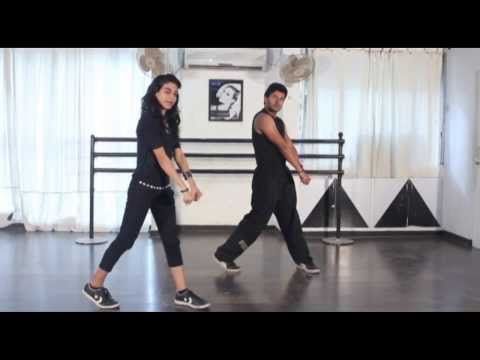
That's why Latin dance classes awaken ease of communication, enthusiasm and joy of movement, passion and emotions, sometimes reaching the "boiling point". Their popularity among Europeans is largely due to what we sometimes lack, and dance allows us to express this energy locked inside, giving free rein to desires and aspirations.
Thanks to this, Latin dances develop freedom of expression, assertiveness and confidence, a tendency to be active and initiative, the ability to harmoniously express one's eroticism in a rich improvisation of body movements.
Latin America, Caribbean countries have presented a huge amount of incendiary music and dances. Their common feature is that they were born among the common people and at first aroused contempt in cultural Europe, being considered vulgar and indecent. However, over time, developing, merging with the rhythms of other peoples - European and African, these Latin dances became more and more popular, and today they have a huge number of fans all over the world. Our dance school for adults in Moscow is one of them.
Our dance school for adults in Moscow is one of them.
Salsa dance
The origins of salsa lie not only in the rhythms of the Cuban folk dance "Guajira", but also in the music of African slaves brought to America by the Spanish colonialists.
African musical culture is characterized by attention to musical rhythm, being an indispensable component of various rituals, from religious to everyday, it uses polyrhythm, rhythmic polyphony, cross-rhythm.
Salsa refers to a mixture of a wide variety of Latin American styles and rhythms, including guaracha, cha-cha-cha, pachanga, and rumba, and mambo, and more. This is a real "hot sauce" of the rhythms and sounds of a sultry sunny tropical summer, the chirping of birds and the sound of the surf, the ocean wind and the rustle of palm trees.
Thus, African music is freer than European music and has more room for improvisation. Natives of Africa, being far from their homeland, carefully preserved their cultural traditions, but also gradually mastered the culture of white people.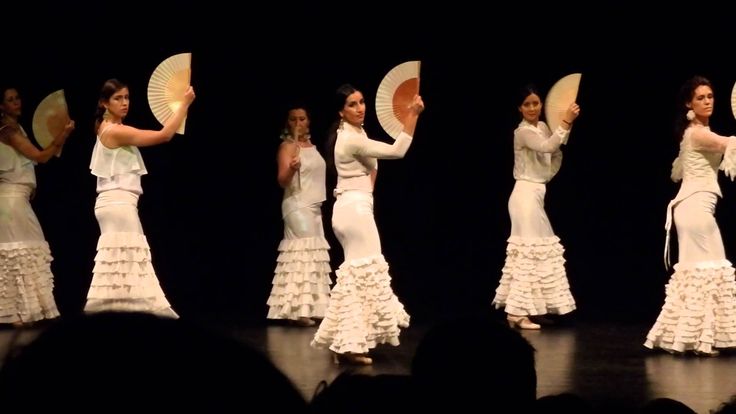 European music brought melody and harmony, minor and major standards, solo melodic beginning to African rhythms. This is how jazz was born.
European music brought melody and harmony, minor and major standards, solo melodic beginning to African rhythms. This is how jazz was born.
At the very beginning of the 20th century, the musical style "Son" appeared in Cuba, in which elements of African, Cuban and Latin American music were combined. At first it was subject to prohibitions, after the First World War it gradually changed and only in 1920-30 years began to gain popularity.
Mambo dance
In the 1940s, Cuban music was greatly influenced by jazz. In turn, jazz bands began to play Cuban music in their own interpretation. Perez Prado, a Cuban by birth who lived in Mexico after the war, created a style that combined Cuban music and jazz. Thanks to him, the traditional Cuban "danzon" turned into something completely new - the dance "Mambo" appeared.
Mambo is a Cuban musical form and dance style that has reached popularity in Havana, Mexico City and New York. The word Mambo means "conversation with the gods" in the Kikongo language, which was spoken by the Central African slaves brought to Cuba by the colonialists.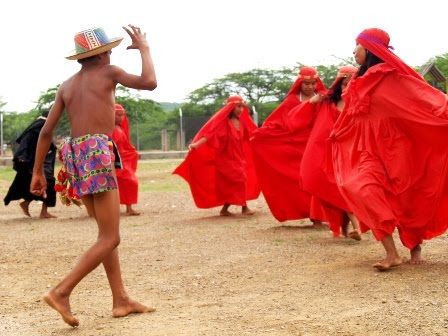
Other sources attribute the name "mambo" to voodoo sorcerers who could put a person into a hypnotic trance. Mambo music was believed to contain some of this magic.
Mambo music and songs are believed to have originated from a song called "Mambo" written in 1938 by Orestes and Cachao López. The song was a danzón derived from the European social dances of English, French and Spanish, but it also used rhythms from African folk music.
According to another version, Odilio Uffe and Arsenio Rodriguez are considered the fathers of mambo. Be that as it may, the music was recorded in 1945 in Mexico by the famous orchestra of the Cuban Perez Prado. And in the 50s, mambo music and dance became extremely popular. The famous "Mambo Kings": musicians Perez Prado, Tito Puente, Israel Lopez Cachao, Machito, outstanding mambo singers Benny Moore, Celia Cruz.
Initially, the mambo dance was even condemned by the Catholic Church in a number of Latin American countries or banned by the authorities in others.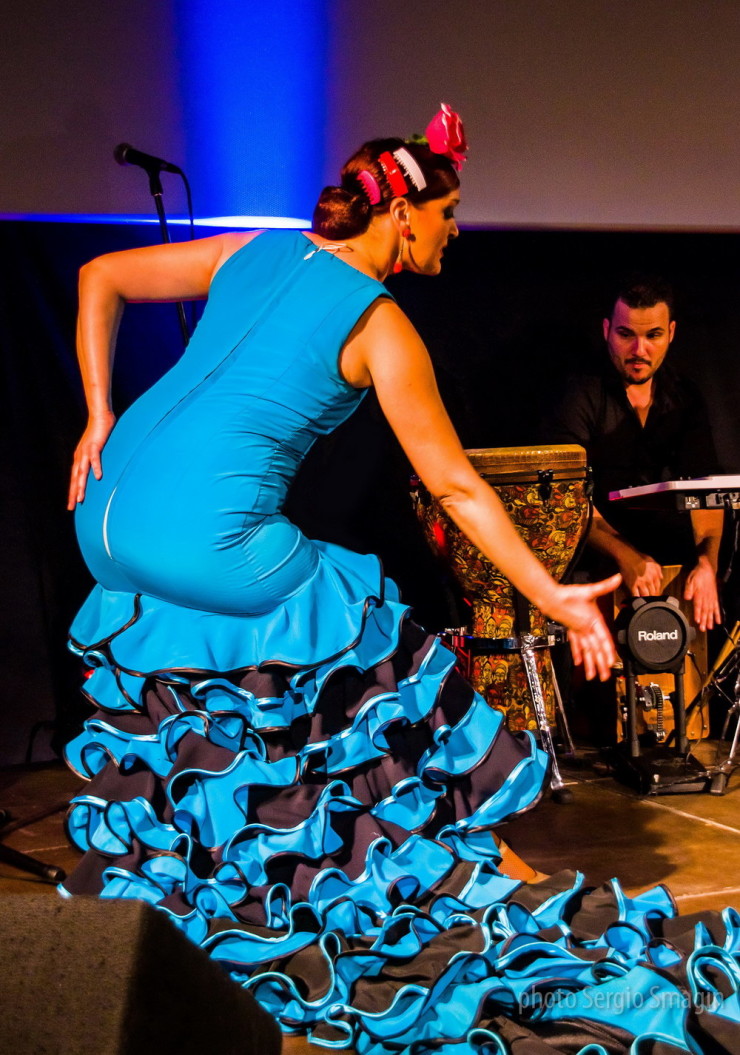 But, nevertheless, the number of dance fans grew every day. We also dance this dynamic dance in the latino solo program at dance school in Moscow.
But, nevertheless, the number of dance fans grew every day. We also dance this dynamic dance in the latino solo program at dance school in Moscow.
Cha-cha-cha dance
And in 1948, another composer, Enrique Horrin, combined two Cuban rhythms danzón and montuño, and wrote the song Enganadora, which means "Cheat". This new musical rhythm gave birth to the Cha-cha-cha dance. Various combinations of fast and slow steps, syncopated rhythms to the music of Cha-cha-cha awaken a cheerful, playful mood, and the dance itself turns out to be mobile, bright, sparkling.
At the end of 19In the 50s, after the revolution, many Cuban musicians left their homeland and moved to New York. Here Cuban music was influenced by various Puerto Rican melodies and American jazz. This musical direction quickly became popular thanks to the creativity of various bands and even large orchestras, using both traditional musical instruments and specific Cuban ones. All this determined the style of a new musical direction - salsa-metropolitan ("capital salsa").
After a brief oblivion in the 60s of the last century due to the huge popularity of the Beatles, Latin American music has returned and is now popular and loved - many singers and musicians use Afro-Cuban rhythms in their work.
Merengue dance
The merengue was presented by the Dominican Republic. Meringue melodies are rhythmic and create a cheerful mood, convey the atmosphere of an eternal tropical holiday and natural abundance. The simple rhythmic pattern of this music makes it very easy to master the figures of the merengue dance. Simple steps, a characteristic swaying of the hips, allow you to create beautiful chains of movements both in solo Latin dance and in Latin dances in a pair, where very interesting weaves in the hands are added.
Rumba dance
The old Cuban folk dance "Guajira", whose name gave the name to a wooden musical instrument, served as the basis for another beautiful Latin American dance - "rumba". Many elements of guajira passed into rumba almost in their original form.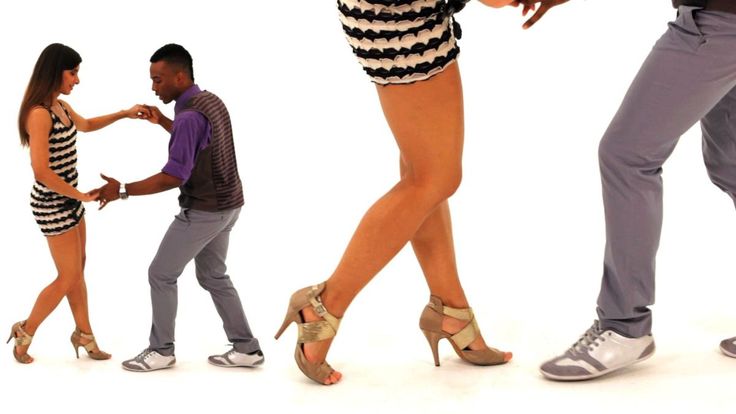
The famous song Guantanamera written by Joséito Fernandens can rightfully be considered a rumba classic. The verb rumbare is Cuban for "to dance" and often means "dance party" which may include music from various Cuban dances. The Spanish-speaking inhabitants of Latin America still have such a name as "bolero-rumba", "square-rumba". When at the end of 19In the 40s, rumba became known in Europe and the USA, it was called "Cuban rumba".
But no matter how the dances differ in choreography, they are united by beautiful music and a simple, romantic and at the same time refined rhythm with exciting sounds of guajira. The rhythm of Rumba is able to awaken strength, confidence, sensuality, simplicity and purity of relationships.
Samba dance
Samba was born on the coast of South America. The Portuguese, being the discoverers of these places, developing new lands, brought with them black slaves from the colonies of southwestern Africa. A bay on the American coast in the delta of a huge river was called Rio de Janeiro ("January River"), the region was originally called Bahia, and later turned into the country "Brazil".-Step-12.jpg/aid56699-v4-728px-Shuffle-(Dance-Move)-Step-12.jpg)
The samba dance is a wonderful cocktail of Latin American and African rhythms. The rhythm of the African batiko drums helped the dancers shake off their fatigue after a long day at work. Africans called their dance "semba" and danced it barefoot. "Impregnated" with the rhythms of the American land, the dance gradually turned into a magnificent "samba". Bright and festive, samba has rightfully become the "calling card" and pride of Brazil.
Of course, what we see at festivals and carnivals in Rio de Janeiro differs from the performance known to us from competitive ballroom dancing. Revealing all its diversity, the samba dance is good both in solo and in pairs, and, thanks to its beautiful rhythm, invariably awakens cheerfulness and high spirits.
Moscow Center for Contemporary Dance - dance school for adults - offers two Latin American dance training programs in Moscow - Latina! - That's Latin (Lessons of solo club Latin American dances) and LATIN CLUB (lessons of Latin American pair dances).
A feature of our programs is that within the framework of one dance course, all the main dances of the Latin style are taught at once - salsa (salsa), merengue (merenge), rumba (rumba), bachata (bachata), cha-cha-cha (cha -cha-cha), samba (samba). You can practice latin dance for as long as you want - in our dance courses, in individual dance classes, you can learn how to dance competently, as well as use dance lessons as a means of supporting tone, mobility and mood.
More information about Latin American dance programs in our dance school for adults in Moscow can be found on the pages of the programs:
- Latin - That's Latin (solo club Latin American dance lessons)
- LATIN CLUB
City newspaper
There are dances where technique is most important. This is not about flamenco. In this art, the most important thing is to improvise and break the rules. Therefore, in the homeland of flamenco - Spain - not a single Spaniard will say that he cannot improvise.
 Flamenco is not only a dance, it is also a style of music and singing. It's a lifestyle. / Irina Borodina.
Flamenco is not only a dance, it is also a style of music and singing. It's a lifestyle. / Irina Borodina.
The guajira, a peasant woman's dance, is most often performed with a fan. The fan focuses the viewer's attention on the plasticity of the dancer's hands. The diameter of the fan is about half a meter. / Photo by Ekaterina Shestakova.
The most musical city in Spain is Jerez de la Frontera, which is located in Andalusia. Every tenth inhabitant of Jerez, including the elderly and children, is a flamenco artist. However, in a guide to Spain you will not find a word about modern nuggets from Jerez. Few travelers manage to get to closed family fiestas. Proud residents will never perform for tourists, unlike the citizens of Madrid and Barcelona.
Flamenco secrets are passed down from generation to generation. Five hundred years ago, it was the gypsies from Andalusia who combined Spanish and gypsy folk dances. Dancing on bent legs, but with a straight back, the Andalusian people demonstrated their disobedience to the Spanish queen.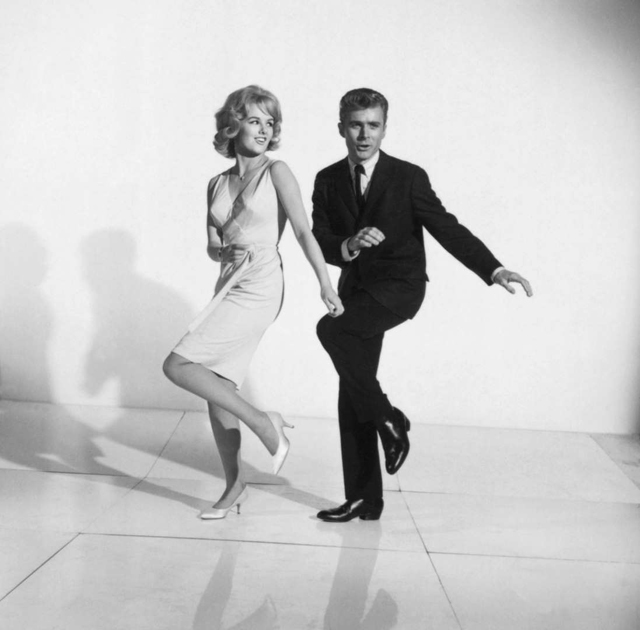
The dancers called themselves "flamencos", which means "fiery", "blooming", "flamingos".
Flamenco is not as strict as waltz or foxtrot, where there is a clear sequence of movements. Flamenco is an improvisational dance. The only thing that is invariable in it is the rhythm, but each of the dances has a special one. In Spain, in flamenco schools for several hours a week, dancers practice only the rhythm - clapping, heels, castanets and even canes. The melody prompts the artist's emotions and movements. At children's matinees in Spain, it is customary to put on "adult" music and dance with the children. Therefore, not a single Spaniard will say that he cannot improvise.
Both sad and incendiary
There are more than 50 types of dance, but all of them can be divided into two groups. Hondo - "deep flamenco" - here the dancer with the help of movements tells the story of his character, often tragic. This dance is performed solo or in pairs. The second group is Festero, that is, “festive flamenco”. The style is more rhythmic, light and fast. It is more often danced by a group - either at holidays or in front of tourists.
The second group is Festero, that is, “festive flamenco”. The style is more rhythmic, light and fast. It is more often danced by a group - either at holidays or in front of tourists.
How is flamenco danced?
Even if a solo performance is being prepared, the dancer never goes on stage alone. Flamenco is created by a whole team: a dancer, a singer and a guitarist. The guitarist (tokaor) enters first. Flamenco musicians use a special technique - they pluck the strings with two fingers. So the guitarist imitates the movements of a flamenco dancer who beats the rhythm with two heels. True, in some melodies you can strike the strings with the whole brush, imitating the opening of a fan by a dancer. The next melody is picked up by the singer - contaor. With a special hoarse voice (like that of Vysotsky), he immerses the viewer in the mood of the dance. Only a few minutes later a dancer (baylaor) enters the stage.
At family fiestas, the Spaniards do not just dance, but play a flamenco performance, where both styles are intertwined - jondo and festero. The mini-play consists of several scenes - the acquaintance of a beautiful lady with a seigneur, a fight with a rival (or rival), a declaration of love, etc. The characters show all emotions and actions only with dance and plasticity, without words.
The mini-play consists of several scenes - the acquaintance of a beautiful lady with a seigneur, a fight with a rival (or rival), a declaration of love, etc. The characters show all emotions and actions only with dance and plasticity, without words.
Life in three minutes of dance
In ordinary life, Valeria Kuleshova is a student and a journalist, but as soon as she enters the stage, she turns into an impregnable heroine of a medieval novel. You can look at her as much as you like - admire and applaud, but you will never get a flamenco dancer.
Before you go on stage, imagine a Spaniard. She's in the same dress as yours, with the same hairdo. How does she keep herself? How does he sit and talk? We must accept this Spaniard for who she is, and let her in. Learn to live in this image for at least a few minutes. I don’t know what the magic is, but every time you do this before going out, the audience in the hall changes.
My heroine always suffers. Flamenco is like a spare room for me. When you get tired of the familiar environment, you go there and become whoever you want. You can be an abandoned mother or an abandoned woman there. Music evokes many images and movements. In general, flamenco is the best antidepressant, you forget about everything.
I danced in a black dress, with dim lights. I only had one doodle in the entire room. The dance was theatrical, everything in it was based on emotions. This is the story of a woman whose child was taken from her. She cries, suffers, rushes to him, but they do not let her in. In the end, her life is still getting better. And she is happy that as a woman and as a mother she realized herself. All this in three minutes. And most importantly ... the viewer understood everything.
But how to learn dance? Rumba or guajira? You watch some dances on video, you bring them from master classes. But all the same, you modify everything for yourself, because you invest your own emotions, and not someone else's.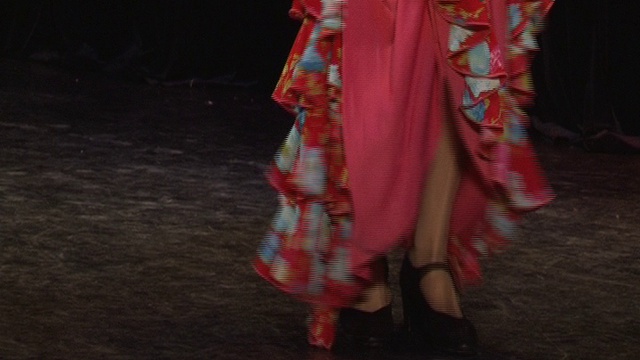 It is impossible to repeat everything perfectly.
It is impossible to repeat everything perfectly.
I liked one young man, but he did not succumb to me in any way! Then I decided to dance my problem. The dance was theatrical. I went on stage and pretended to read a love letter. In the end, the smile slowly disappears - it becomes clear that he abandoned my heroine. Then the note is torn and grief and suffering begin. "Stories about..." are always more liked than static dances. They are more interesting and emotional. The young man, by the way, after the dance “surrendered” to me - the problem was solved by itself.
There is a famous dancer Sarah Baros. At one of her concerts, she brought her niece onto the stage. A little chubby girl, in a sarafan and sandals, about eight years old. The artists started clapping her rhythm! She began to listen, then to clap. Quietly like that, she entered the rhythm ... And then how she went to crush! Moreover, there is not much sound, because she is not in shoes, but in rubber sandals.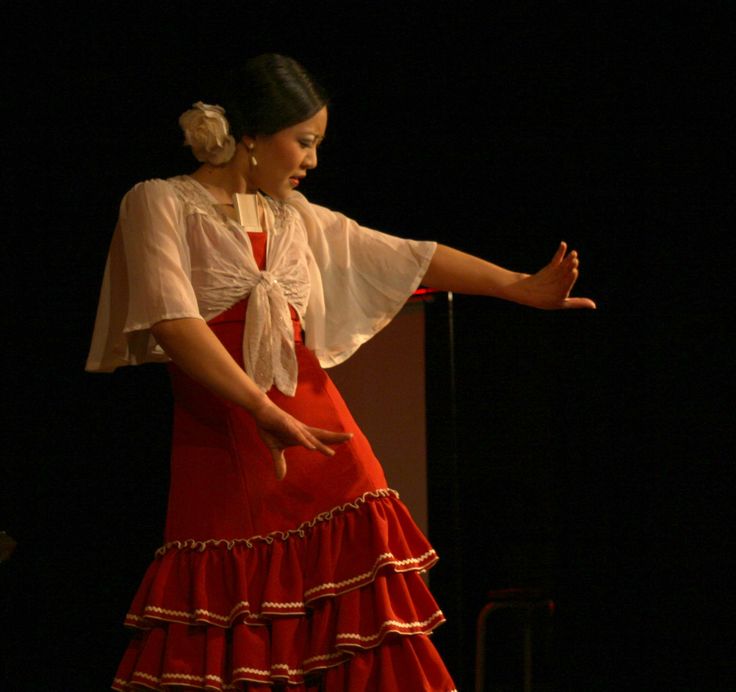 But what energy! What a powerful message to the audience!
But what energy! What a powerful message to the audience!
The most popular flamenco dances
Flamenco dances differ in rhythm, melody and mood. There are no specific movements in them, because flamenco is built on improvisation.
Tarantos
Tarantos dancing at the funeral. This is a lamentation dance, with the help of which the dancer conveys his grief to others. The dance is slow, each movement is performed so tensely that from the auditorium one can see how the muscles on the body of the dancers tremble.
Guajira
This is a peasant woman's dance. This is a dance that is traditionally performed with a fan. It appeared in the 20th century. To cheerful and rhythmic music, the dancer skillfully moves the fan in her hands.
Alegrias
This is a cheerful dance, which consists of several parts - going out, walking and dancing itself.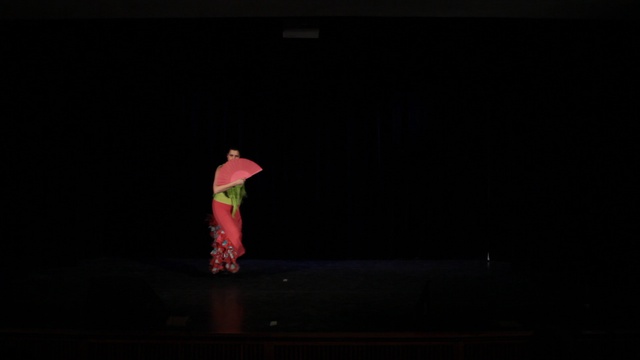 In the dance, a large number of fractions are beaten off with the feet and a lot of clapping.
In the dance, a large number of fractions are beaten off with the feet and a lot of clapping.
Tangos
Tangos is upbeat and laid-back, similar to rumba, but the guitar sounds different here. In rumba, the melody is freer, with a less pronounced rhythm. The dance is often confused with the tango, although in fact they are not at all similar. It's just that the dances have one common ancestor - the European minuet.
Sevillana
The Sevillana dance is performed simultaneously by a woman and a man, but not in pairs. In the dance, the partners move around the stage, change places to the beat of incendiary music. At the same time, the dance is plastic and graceful. The style originated in Seville in the 16th century.